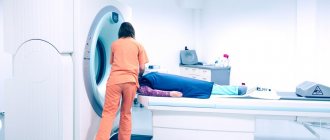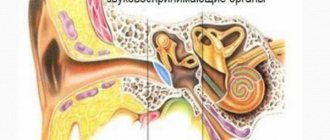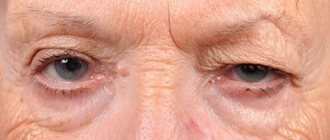May 30, 2021
Left-sided and right-sided hemiparesis is a pathological human condition that is accompanied by loss of sensitivity in certain parts of the body, weakening of muscles on one side of the body. Most often, this situation occurs as a result of functional disorders of the cerebral cortex, spinal injuries of varying severity. According to statistics, most cases are observed in early childhood, but the disease is also diagnosed in adults, especially in old age. Hemiparesis is a rather dangerous disease, but it is highly amenable to complex treatment, and timely treatment will minimize the risk of complications.
Causes and risk factors
Hemiparesis can have a primary or secondary origin - develop as an independent disease or be a consequence of another disease, or be one of its symptoms. It can also be diagnosed during the recovery period after hemiplegia. It is easier to determine the cause by the location of the problem, specifying which side is affected - left or right.
The most likely causes of hemiparesis are:
- stroke - blockage or rupture of blood vessels in the brain followed by hemorrhage;
- benign or malignant tumors – during the growth process they compress nearby tissues and damage healthy cells;
- traumatic brain injuries - bruises, concussions are accompanied by the death of tissue areas;
- encephalitis is a large group of infectious diseases accompanied by inflammation of the brain and neurological disorders;
- epileptic conditions - especially dangerous when the next attack ends with a spasm of skeletal muscles, which inevitably leads to paralysis;
- migraine is a severe headache of unknown etiology that can cause hemiparesis only in particularly severe cases;
- multiple sclerosis – contributes to the destruction of the protective membranes of the nerves, causing their damage;
- atrophy of brain tissue - this process causes the death of neurons, which inevitably leads to disturbances in the sensitivity of parts of the body;
- diabetes mellitus – its severe course causes convulsive contraction of cerebral vessels;
- cerebral palsy - in this case, hemiparesis is considered congenital, acquired in utero or during childbirth.
2. Reasons
In the most general form, the cause of paralysis and paresis can be formulated as a violation of the interaction between the central nervous system (brain and spinal cord) and the peripheral executive system (skeletal, intestinal, bladder, sphincter and other muscle systems).
In turn, such a violation can be caused by three global factors:
- failure of the central nervous system itself (for example, in dystrophic-degenerative diseases, various atrophic, oncological, inflammatory processes, ischemic and hemorrhagic strokes, mechanical lesions of the motor areas of the cerebral cortex and/or motor neurons of the spinal cord);
- end organ failure (for example, with muscle atrophy, severe ruptures of muscle-ligamentous structures or poisoning with certain poisons, mainly plant ones, which are notorious for their ability to cause total muscle paralysis and painful death from suffocation and/or cardiac arrest);
- failure of the communication system is, in fact, a breakdown of the connection between the central nervous and muscular systems: in this case, the fully functional final “performer” simply does not receive activating nerve impulses (traumatic, atrophic, etc. damage or damage to neuronal conduction channels).
The so-called is sometimes considered as a relatively independent form. “sleeping” or hypnopompic (“on awakening”) paralysis. This state, caused by a disruption or failure of sleep phases, can last up to several minutes and is usually accompanied by panic vital horror (sudden awareness in reality of one’s absolute immobility, defenselessness and helplessness), as well as vivid, frightening hallucinations (“aliens”, “intruders”, “rapists”) ", "killers", etc.), sometimes with a complete tactile illusion of actions performed in relation to the paralyzed person. Mainly from here, we note, comes a small but steady flow of quite sincere statements about “alien abductions”, “contacts with demons”, as well as absurd (but sometimes causing very real and serious troubles) accusations of robbery and rape. The mechanism for the development of this condition is due to the fact that in the REM sleep phase, motor activity should be turned off automatically; this is a normal, physiologically justified, protective paralysis (otherwise, somnambulism develops, orally “sleepwalking,” i.e., sleepwalking in various variants and forms). However, under unfavorable conditions (situations of chronic stress combined with sleep deficiency, some mental disorders, narcolepsy, i.e. pathological drowsiness, etc.), the reverse activation of motor functions is delayed, and awakening occurs earlier, in the “fast” phase.
Visit our Neurology page
Forms of hemiparesis
Based on their origin, there are two forms of hemiparesis:
- congenital;
- acquired.
Based on location, the disease is divided into:
- central hemiparesis - caused by pathology of the pyramidal tract in the area from the CGM to the anterior horns of the spinal cord;
- peripheral hemiparesis - occurs as a result of damage to the nuclei of the cranial nerves, cells of the anterior horns of the spinal cord.
The side opposite to the injury is predominantly affected by hemiparesis, which is explained by the crossing of nerves in the area where the medulla oblongata passes into the spinal cord. But there are cases of paresis on the side of the injury.
Based on the location of the lesion, the disease is classified into:
- right-sided hemiparesis is the most common variant diagnosed in adults and is accompanied by speech impairment; disorders manifest themselves in mild or severe severity;
- left-sided hemiparesis - mainly occurs in childhood, as it is one of the symptoms of cerebral palsy; this form is characterized by mental disorders.
Separately, the classification distinguishes spastic hemiparesis, which affects only the limbs on one side of the body.
According to the nature of the disease, the following are distinguished:
- acute form - developing in a short time;
- subacute – slowly progressive.
According to severity, hemiparesis is divided into:
- easy;
- moderate;
- deep.
Hemiparesis is diagnosed based on the degree of damage, taking into account the points scored:
- 5 points – motor activity is fully preserved, muscle strength is normal;
- 4 points – range of motion is completely preserved, muscle strength is slightly lost;
- 3 points – motor activity is significantly impaired, but the muscles have difficulty overcoming the force of friction, that is, the limb can come off the surface;
- 2 points – movements are minimally preserved, limbs can move along the plane without leaving it;
- 1 point – muscle activity is slightly noticeable, movements in the limbs are practically absent;
- 0 points – no motor activity, complete paralysis is observed.
Signs of central paresis
With central paresis, muscle strength decreases to varying degrees. In some cases, patients are worried about rapid fatigue and awkwardness, while in others there is an almost complete loss of movement. Since with central paresis the part of the spinal cord below the site of injury remains intact, it tries to compensate for motor disorders. This leads to an increase in muscle tone, strengthening of normal reflexes and the appearance of pathological ones, which do not occur in a healthy person. Due to spastic paresis, contractures can develop - restriction of movements in the joints.
Symptoms
Congenital hemiparesis, the symptoms of which differ from acquired ones, most often manifests itself in the first year of life, when motor activity lags behind, and speech and intellectual disorders are observed. Among the early symptoms of the disease it is worth highlighting:
- inability to make symmetrical movements of the limbs;
- restriction of activity on the affected side;
- pronounced asymmetry of the Moro reflex;
- lack of support on the sore side in the child when the body moves to a vertical position, and in a horizontal position the baby does not stretch out the weakened arm and does not use it as a support;
- flatness of the thigh muscles with noticeable rotation to the outside.
Young children may exhibit neurological disorders, for example, ignoring a diseased part of the body, which significantly complicates treatment.
The symptoms accompanying hemiparesis may be mild, but most often they include:
- memory and speech impairment;
- decreased mental activity;
- lack of purposefulness in movements;
- difficulty in recognizing objects and phenomena;
- decreased or complete absence of sensitivity of the diseased area;
- long-lasting headache;
- epilepsy attacks;
- temperature increase;
- general weakness and fatigue;
- arthralgia.
It is important to understand that the posterior part, as well as other parts of the brain, can be affected, which will be accompanied by changes in the facial muscles. In this case, treatment of hemiparesis depends on the degree of intensity and causes of the disease.
Left hemiparesis is also characterized by changes in visuospatial analysis and synthesis. Symptoms of right hemiparesis most often include verbal impairments, which in childhood is expressed in insufficient vocabulary and lack of reasoning.
Whatever symptoms accompany hemiparesis, its treatment will depend on competent and accurate diagnosis.
1.General information
First of all, let’s define, as always, the terminology. Paralysis is complete and unconditional immobility of an organ or system for which motor activity is the main natural function. This is the inability of the patient to cause such activity "from within" - neither by conscious nor unconscious effort of will, while from the outside, for example, a paralyzed leg can be rotated at the hip joint or bent at the knee with the help of one's own hands or the hands of another person. This is the difference between paralysis, say, muscle spasm or joint contracture, when such movement is impossible in principle; The term “paralysis” emphasizes precisely the inability of the affected organ to carry out the command of the central nervous system.
Paresis translated from Greek means “weakening, loss of strength”; this term refers to incomplete paralysis (which, by the way, is also translated as “relaxation”), when the available muscle effort or the original range of possible movements is partially preserved; the degree of this preservation can vary widely.
As a synonym for the concept of “paralysis”, the term “plegia” (“stroke”) is often used, which is semantically close to the concepts of “apoplexy” and “stroke” - which apparently formed the etymological basis of the outdated Russian phraseological units “suffered a blow” ", "paralysis after a blow", "apoplexy", etc. However, in modern medical terminology, the word "plegia" is usually used with qualifying prefixes: hemiplegia (one-sided paralysis), mono-, para- or tetraplegia (respectively, paralysis of one , both same-level or all four limbs).
A must read! Help with treatment and hospitalization!
Diagnostics
It is important not just to determine the presence of the disease based on symptoms, but also to differentiate the cause of the pathological condition. For diagnosis, you should contact a neurologist, who will draw up an examination plan and prescribe further treatment.
The traditional diagnostic scheme includes:
- Interviewing the patient or parents if the child is sick - based on the results, the symptoms, duration of their manifestation, and intensity are determined.
- Examination of the patient for the functioning of body parts, the ability to perform basic movements.
- Computed tomography to detect tumors in the brain.
- MRI to more accurately determine the location of tumors, as well as detect functional vascular disorders.
- Electromyography will allow you to assess the degree of functioning of skeletal muscles, which is a very important criterion in the diagnosis of hemiparesis.
- Ultrasound of the brain is often prescribed in childhood and allows one to assess the rate of progression of the disease and prevent adverse neurological disorders.
Complex nerve surgeries and restoration of limb functionality
Multiple lesions of peripheral nerves can lead to serious consequences. Including complete or partial paralysis of the limbs. And if previously such disorders were often considered incurable, today at the NOAHKLINIK clinic Professor Ernst Magnus Noah and his team perform complex nerve operations, restoring the normal functionality of the arms and legs.
For a long time it was believed that paralysis occurs only with extensive lesions and injuries of the spinal cord. And total paralysis occurs only when the integrity of the brain, which is located in the spinal canal, is violated. But in addition to central paralysis, peripheral paralysis is also distinguished. And if the first is really associated exclusively with brain damage, then the second is caused by damage to peripheral nerves and neurons. In the latter case, areflexia, hypotonia, atony and atrophy are observed.
Nerve surgery to restore normal function of the limbs requires not only the most modern equipment, but also many years of experience. At the NOAHKLINIK clinic, Professor Ernst Noah personally performs this type of surgery, and the results are much better than in most European clinics. Moreover, not everywhere specialists are ready to take on such work.
In this article we will look at the reasons for which paralysis of the limbs can occur, how dangerous it is and how surgical treatment is carried out at NOAHKLINIK.
Treatment
Patients and their relatives should understand that with hemiparesis, treatment depends on many factors - the causes of the disease, the side of the lesion, the age of the patient, and the severity of symptoms. After a thorough examination, the neurologist prescribes a comprehensive treatment, which includes not only medication, but also restorative procedures that help quickly restore the functioning of muscles and nerve fibers in the affected areas. The treatment package includes:
- classes in the pool;
- massage course;
- exercise therapy;
- various hardening methods;
- medications;
- individual treatments.
It is important to know that medications are prescribed only in particularly severe cases - in other situations, non-drug methods contribute to recovery.
Left-sided hemiparesis is effectively treated with baklosan, mydocalm, seduxen, and cerebrolysin. These medications are prescribed only by a doctor and taken strictly according to the instructions, as they can have negative side effects.
Right-sided hemiparesis, like left-sided hemiparesis, is treated with muscle relaxants, B vitamins, and high-tocopherol supplements.
Treatment and rehabilitation for paresis
Neurologists at the Yusupov Hospital prescribe drug therapy depending on the cause and type of paresis. Rehabilitation treatment is of great importance for restoring movements and preventing contractures. The Yusupov Hospital is equipped with modern equipment from leading world manufacturers. The rehabilitation clinic employs exercise therapy instructors who improve their professional level in leading European and Russian rehabilitation centers.
Rehabilitation for paresis includes:
- therapeutic exercises;
- mechanotherapy on special simulators;
- massage;
- neuromuscular stimulation;
- use of orthoses;
- physiotherapeutic procedures.
For the convenience of patients, comprehensive rehabilitation programs have been developed that allow them to save the family budget and receive a full course of rehabilitation therapy at a stable, affordable price. In order to undergo a course of treatment and rehabilitation for paresis, call the Yusupov Hospital.
Prevention
Right-sided and left-sided hemiparesis is always easier to prevent than to treat, so it is important to know what disease prevention involves.
Effective preventive measures are:
- timely detection and full treatment of all emerging pathologies in the body;
- mandatory screenings for expectant mothers prescribed by a gynecologist;
- giving up bad habits in order to prevent cardiovascular and endocrine diseases;
- preventing all kinds of stress and anxiety;
- normalization of the diet, enrichment with vitamins;
- moderate physical activity, according to age and health status.
And most importantly, at the first signs of hemiparesis, you should consult a doctor and not self-medicate, so as not to provoke serious complications.
Return to list
Types of paresis
Central paresis occurs when the brain or spinal cord is damaged. Disorders develop below the site of damage. They capture the right or left half of the body. This condition is called right-sided or left-sided hemiparesis. Paresis of the left arm is called left-sided monoparesis.
If, as a result of central paresis, disturbances occur in both arms or both legs, we are talking about paraparesis, and if motor function is impaired in all four limbs, we are talking about tetraparesis.











